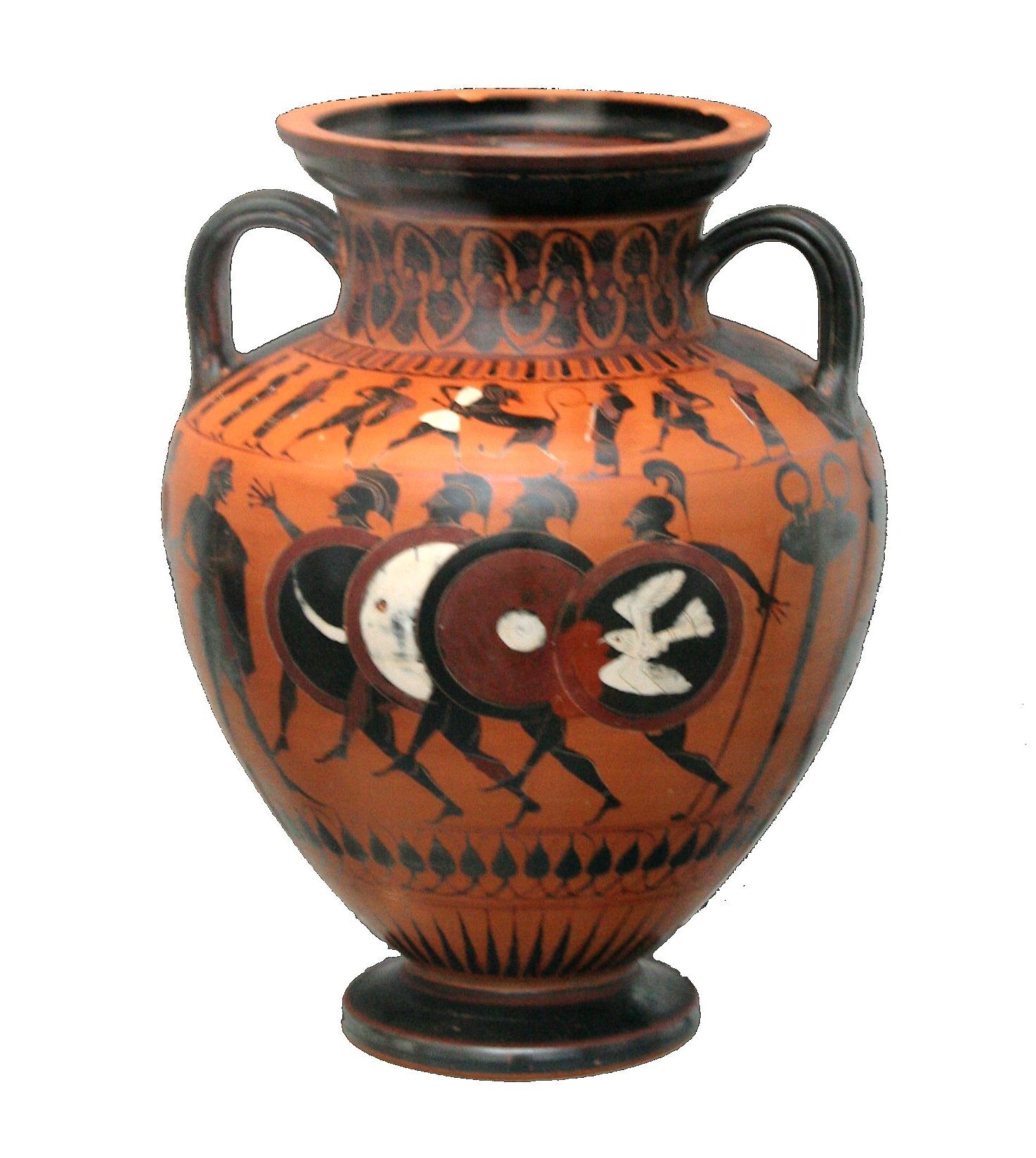Aspis on:
[Wikipedia]
[Google]
[Amazon]
 An aspis ( grc, ἀσπίς, plural ''aspides'', ), or porpax shield, sometimes mistakenly referred to as a hoplon ( el, ὅπλον) (a term actually referring to the whole equipment of a hoplite), was the heavy wooden shield used by the infantry in various periods of
An aspis ( grc, ἀσπίς, plural ''aspides'', ), or porpax shield, sometimes mistakenly referred to as a hoplon ( el, ὅπλον) (a term actually referring to the whole equipment of a hoplite), was the heavy wooden shield used by the infantry in various periods of
Classical Greek Shield Patterns
Greek shields Ancient Greek military terminology
 An aspis ( grc, ἀσπίς, plural ''aspides'', ), or porpax shield, sometimes mistakenly referred to as a hoplon ( el, ὅπλον) (a term actually referring to the whole equipment of a hoplite), was the heavy wooden shield used by the infantry in various periods of
An aspis ( grc, ἀσπίς, plural ''aspides'', ), or porpax shield, sometimes mistakenly referred to as a hoplon ( el, ὅπλον) (a term actually referring to the whole equipment of a hoplite), was the heavy wooden shield used by the infantry in various periods of ancient Greece
Ancient Greece ( el, Ἑλλάς, Hellás) was a northeastern Mediterranean civilization, existing from the Greek Dark Ages of the 12th–9th centuries BC to the end of classical antiquity ( AD 600), that comprised a loose collection of cu ...
.
Construction
An aspis was deeply dished and made primarily of wood. Some had a thin sheet of bronze on the outer face, often just around the rim. In some periods, the convention was to decorate the shield; in others, it was usually left plain. The aspis measured at least in diameter and weighed about , and it was about thick. This large shield was made possible partly by its shape, which allowed it to be supported comfortably on the shoulder. The revolutionary part of the shield was, in fact, the grip. Known as an grip, it placed the handle at the edge of the shield and was supported by a leather or bronze fastening for the forearm at the center, known as the porpax. This allowed hoplites more mobility with the shield, as well as the ability to capitalize on their offensive capabilities and better support the phalanx. The shield rested on a man's shoulders, stretching down to the knees. They were designed for a mass of hoplites to push forward into the opposing army, a move called '' othismos'', and it was their most essential equipment. That the shield was convex made it possible for warriors to use it as a flotation device for crossing rivers, and its large round shape allowed it to be used for hauling the bodies of the dead from the battlefield. Such shields did not tend to survive the passage of time very well, and only one aspis has survived into modernity with sufficient preservation to allow us to determine the details of its construction: this shield is called the "Bomarzo" or "Vatican" shield, and it is currently located in the Vatican, within theMuseo Gregoriano Etrusco
The Vatican Museums ( it, Musei Vaticani; la, Musea Vaticana) are the public museums of the Vatican City. They display works from the immense collection amassed by the Catholic Church and the papacy throughout the centuries, including several o ...
. It was discovered in 1830 near Bomarzo in Lazio
it, Laziale
, population_note =
, population_blank1_title =
, population_blank1 =
, demographics_type1 =
, demographics1_footnotes =
, demographics1_title1 =
, demographics1_info1 =
, demographics1_title2 ...
, central Italy.
See also
* Ancient Greek warfare * Clipeus, a similar shield used by the Romans *Peltast
A ''peltast'' ( grc-gre, πελταστής ) was a type of light infantryman, originating in Thrace and Paeonia, and named after the kind of shield he carried. Thucydides mentions the Thracian peltasts, while Xenophon in the Anabasis disting ...
, a light infantry
Light infantry refers to certain types of lightly equipped infantry throughout history. They have a more mobile or fluid function than other types of infantry, such as heavy infantry or line infantry. Historically, light infantry often foug ...
man using a lighter ''pelte'' shield
* Thyreophoroi and thorakitai, medium infantrymen using '' thyreos'' shields
References
{{ReflistExternal links
Classical Greek Shield Patterns
Greek shields Ancient Greek military terminology